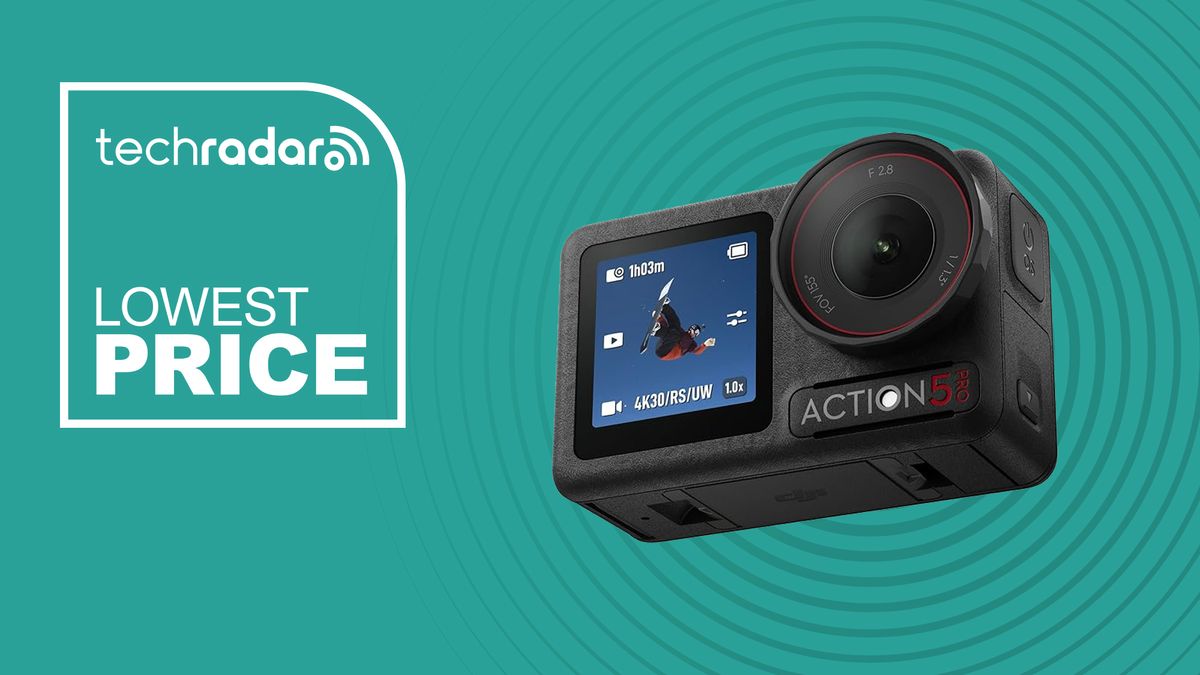I was about a minute into my commute from work when it hit me; I can’t hear a damn thing. Here I am in the middle of the sidewalk near Union Square in Manhattan, surrounded by all sorts of ruckus (people, cars, loud construction), and I can’t hear shit—I can’t hear shit, and it’s awesome. And with a pair of wireless headphones that literally puts “quiet” in the name on your head, you should expect nothing less.
Bose’s QuietComfort Ultra Headphones have already made a name for having awesome active noise cancellation (ANC), and with the $449 QuietComfort Ultra Headphones (2nd Gen), nothing has changed in that regard, and if something has changed, it’s for the better. If Bose’s QuietComfort Ultra Earbuds (2nd Gen) are the only pair of wireless earbuds that I want on an airplane, then the QuietComfort Ultra headphones (2nd Gen) are the only wireless headphones I want to help me tune out a literal armageddon. Sure, ANC isn’t the only metric in a pair of wireless headphones, but if it tops your list of things that you look for in personal audio devices, what you’re really seeking is Bose’s latest over-ear cans.
Bose QuietComfort Ultra headphones (2nd Gen)
Bose's QuietComfort Ultra headphones (2nd gen) have ridiculously powerful ANC and good sound.
- Excellent ANC
- Good sound
- Lossless audio through USB-C
- Better battery life
- Awkward fit inside the included case
- Fit may be too snug for some
Sorry, did you say something?
While lots of wireless headphones have ANC, none in my experience have topped what Bose is putting out. As I type these words, I’m in a crowded coffee shop with people talking, music playing, baristas shouting orders, and I can barely hear a thing other than the song I’m playing at about 60% volume. On the subway? Same thing. I might as well be in a smelly library or, I don’t know, a well-lit coffin tuned by Bose. You are not going to need or want ANC like this on every occasion (please do not wear these while you’re riding a bike), but in the event that you’re safe enough to tune everything out, Bose’s QuietComfort headphones (2nd Gen) do just that.
 © Raymond Wong / Gizmodo
© Raymond Wong / GizmodoAccording to Bose, this ridiculous level of ANC took the help of a literal rocket scientist to make. In a pretty interesting blog post about Bose’s CustomTune technology (what they call this type of ANC), Bose says that aerospace engineer John Rule, PhD, helped devise a solution that adapts ANC to your ears every single time you use them. In both second-generation models of Bose’s Quiet Comfort Ultra headphones and wireless earbuds, it all starts with the chime.
See Bose QuietComfort Ultra 2nd Gen at Amazon
That welcome tone you hear when you pop on Bose’s QuietComfort Ultra Headphones and Earbuds (2nd Gen) isn’t just a flourish; it actually acts as a barometer that maps your ears and, when combined with Bose’s algorithms and the on-device microphones, creates an ANC and listening experience that is custom-tuned to you specifically.
“Using some serious math and complex algorithms, it figures out how your ears tweak that chime based on their size, shape, and depth,” Bose writes in its explainer. “Each ear has its own way of amplifying some sounds and muffling others. CustomTune steps in to balance things out, aiming to keep the sound as true to the original recording as possible.”
This is the type of stuff that, most of the time, you read and try not to roll your eyes; it feels like a marketing gimmick meant to justify a new device. In Bose’s case, however, I can tell you it’s the real deal. This mad science delivers excellent ANC. Mission accomplished.
The sound of silence
Alright, so that’s the ANC. But how do these things actually sound when you’re canceling all that noise? On that front, things come slightly back down to Earth slightly. As is the case with the QuietComfort Ultra Earbuds (2nd Gen), the sound is good but not great. I tested the Bose QuietComfort Ultra Headphones (2nd Gen) in a bunch of different genres (Daft Punk for bass, the band Pinegrove for more singer-songwriter-y rock music, and some sports talk radio for podcasts, to name a few) and was pretty satisfied.
 © Raymond Wong / Gizmodo
© Raymond Wong / GizmodoThey don’t blow me away with super low-level distortion like hi-fi competitors in the wireless earbuds market, such as Technics’ EAH-AZ100, but they deliver enjoyable bass (Bose paid special attention to bass tuning in this generation), and I would say I’m a little less enthused with their performance with rock music. Vocals sound solid, but I find midranges where guitars live can sound a little far off or homogeneous at times. I streamed one of my favorite new rock records, Wednesday’s “Bleeds” front to back more than once, and I think I still prefer the tuning on less expensive competitors like Nothing’s Headphone 1, at least in the rock genre. When it comes to electronic music and hip-hop or any kind of music where low-end is more important, the QuietComfort Ultra Headphones (2nd Gen) shine much brighter.
You can tinker with EQ in the Bose app, though, and I found listening with the “Treble Boost” EQ does sway my enjoyment a little, but not enough to call it a game changer. If you’re that kind of listener, there’s also the ability to custom-tune the EQ using three bands. I’m not that nerdy, but maybe you are, and it’s nice to have the option. Perhaps a more fruitful use of your time is using a new feature in the QuietComfort Ultra Headphones (2nd Gen), which lets you connect them via USB-C.
 © Raymond Wong / Gizmodo
© Raymond Wong / GizmodoBy plugging a USB-C cable into the left earcup and then the other end into an audio source, you can listen to “lossless” audio, which pumps out higher quality audio than a standard Bluetooth connection. I listened using the wired USB-C mode by plugging into an Android phone and streaming via Tidal (on the standard quality mode since I don’t pay for Tidal) and could definitely hear a difference. Listening through a wired connection is pretty much always going to be better, even if you’re streaming to Bluetooth in a hi-fi format like LDAC or FLAC. Ultimately, the ability to use USB-C to listen in lossless is nice, but these are wireless headphones, and I think most people are going to want to use them wirelessly, which is why, unlike ANC, I am going to give Bose’s QuietComfort Ultra Headphones (2ndGgen) a good score in sound quality, but not a great one.
See Bose QuietComfort Ultra 2nd Gen at Amazon
What about the comfort part?
The other operative word in the name of Bose’s headphones that isn’t “quiet” is “comfort,” so it’s only fair to weigh the comfiness heavily in this case. On that front, I’d say that Bose does a pretty good job. Earcups are cushy, and so is the headband, which is great if you’re bald like me and need some extra cushion there. I will say the earcups don’t feel particularly premium, and while I can’t speak to durability over time, I have known some people to complain about flaking as the earcups get older. I would describe the Bose QuietComfort Ultra Headphones (2nd Gen) as being on the tighter side, which is good for someone like me who doesn’t have a particularly big head, but I could see these headphones fitting a lot more snugly on people with bigger heads.
 © Raymond Wong / Gizmodo
© Raymond Wong / GizmodoOne thing I find a little annoying about the design is the fact that when they rest on my neck, they feel a little too snug. This isn’t the biggest knock in the world, and they feel much more comfortable when you face the earcups out instead of directed toward your neck. But if you’re the type of person who likes to spend lots of time with your headphones hanging around your neck like an accessory, you could find the constant friction with your neck and chin a little irksome.
These wireless headphones (which are design-wise the same as the previous generation) definitely feel like they were intentionally designed to be narrower, and that makes sense if ANC is the biggest selling point. A snug fit on your head/ears means a tighter seal and more passive noise cancellation. The sizing is obviously adjustable, so you don’t need to worry too much; though it does feel maybe a little less adjustable than other wireless headphones I’ve tried. I still think that Bose does a better job with the “quiet” part than the “comfort” part, but as I outlined before, that’s a pretty high bar.
Battery life, features, and everything else
Another major selling point of this QuietComfort refresh is the battery life, and Bose definitely hits the mark here, too. Bose says you can expect up to 30 hours of battery life with ANC on, as opposed to a 24-hour battery in the last generation. After three or four days of using the QuietComfort Ultra Headphones (2nd Gen) in about one-hour increments, I was at about 80% battery. That’s not unbelievable battery life in the scheme of other wireless headphones, but it’s not anything to turn your nose up at either. It’s also a 6-hour improvement over the last generation, while the wireless headphones remain the same size-wise.
Feature-wise, Bose includes a lot of the same tricks; there’s immersive audio (equivalent of spatial audio), and the Bose app provides lots of more granular controls like the ability to use a slider to adjust ANC or turn it off completely, and also preset EQ options. Bose also launched “Cinema Mode” with the QuietComfort Ultra Headphones (2nd Gen) and its wireless earbuds equivalent, which is like immersive audio but designed specifically for watching movies, TV shows, and other entertainment.
 © Raymond Wong / Gizmodo
© Raymond Wong / GizmodoI tested out Cinema Mode by watching Jujustsu Kaisen on my phone, and while I never find myself springing for headphones when I’m watching TV, the experience was pretty cool. Vocals were much sharper, and the sound felt spatial and nuanced. Just like immersive audio, turning your head left or right will make it sound like the audio is beaming into the ear facing your content. I’ll be honest, that’s not an experience I particularly like, but the rest of it (sharp, clear vocals and sound that feels like it’s happening in the room) is pretty nice. I could see myself enjoying Cinema Mode on a plane, maybe, if nothing else.
Hardware-wise, there’s not much new here. There are two buttons on the right earcup: a function button for play/pause and track skipping, and a Bluetooth button for pairing. Bose also retains the touch-sensitive slider on the right earcup for adjusting volume. A forward swipe is volume down, while a backward slide is volume up, which feels like it should be the opposite to me, but maybe you’ll feel different. Experience-wise, I like the sensitivity here. I still like physical buttons more (see the Nothing Headphone 1), but I have no real complaints with the button layout or functionality.
 © Raymond Wong / Gizmodo
© Raymond Wong / GizmodoThere’s a carrying case as well as an included USB-C and 3.5mm cable for listening to the headphones wired, and the case is mostly fine, though the way the wireless headphones slot into said case is pretty weird. It’s so strange, in fact, that there’s actually a cloth tab on the inside that instructs you how to fold them so they fit in the case. Again, not a major complaint, but strange to say the least.
With Bose’s QuietComfort Ultra Headphones (2nd Gen) there really is just one thing that outshines the rest, and that’s ANC. For some people that may not be the number one priority in a pair of headphones (maybe you’re looking for something truly hi-fi or with a really long battery life), but for other people who just want to be left the f**k alone, and tune out the world, Bose has just what you need, though it has tough competition in Sony’s WH-1000XM6, which kills it in both the sound and ANC department. Still, if you’re a fan of Bose already and you want cans that just tune everything out, the QuietComfort Ultra Headphones (2nd gGn) are about as adept as wireless headphones come.








 English (US) ·
English (US) ·